The Checker Maven
The World's Most Widely Read Checkers and Draughts Publication
Bob Newell, Editor-in-Chief
Published every Saturday morning in Honolulu, Hawai`i
Noticing missing images? An explanation is here.
Today Is The Day
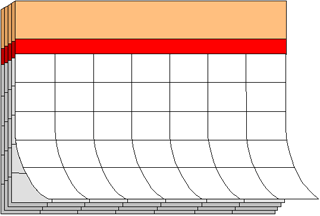
Some of our problems, we admit, can be on the tough side, especially for the average player. But today, we'll give you a checker problem that is easier than you might think:

WHITE
White to Play and Win
W:W22,26:B9,10,13
Can you find the trick that gives White the win? Today's the day for you to solve this problem!
Click on Read More for the surprising solution.![]()
What's Your Hurry?

To open the month, we've chosen a speed problem that may take you a bit longer than some of the others we've run in the past. In fact, we were right on the edge in our decision as to whether or not this is a true speed problem; but the solution is simple and snappy... once you see it.
You know the drill. Click below to show the problem and start the clock. We've allowed you three minutes on this one, but what's your hurry?
We're sure of one thing, though; we know you won't lose any time clicking on Read More to reveal the solution.![]()
A Mighty Forest

As writers ourselves, we're keen appreciators of elegance and style, and we profess unabashed admiration for the writing style of a bygone era.
During the heydays of checker magazines, we've noted that the authors and editors of those long-departed publications had a certain verbal flair and often waxed most eloquent. Few examples surpass this one, penned by E. B. Hallman nearly eighty years ago. His subject was How To Study Checkers.
"There are many checker players who would add tremendously to their enjoyment of the game and increase greatly their skill by well directed study. Checkers is not unlike other activities; knowledge of what others have accumulated by their experience cannot be neglected without loss in playing ability. The game might be compared to a mighty forest, crisscrossed by countless paths, some mere "blind alleys," some leading to dangerous swamps, others along safe and delightful ways, with beautiful scenery on all sides. No man can stand on the edge of the forest, a stranger to its wandering trails, and reason or guess where the paths lead; no man can reason at the beginning of a checker game what the effect of a given move will be."
Our columnist then goes on to advocate the study of endgames and presents a sample problem which, alas, we don't think either well represents the "mighty forest" of checkers, or is nearly as gripping as his flowing prose.
So we'll offer you this one instead, which we think adequately encompasses the virtues that our writer so beautifully espouses.
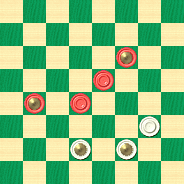
WHITE
White to Play and Draw
W:W24,K26,K27:BK11,15,K17,18.
Can you find the path through the forest that leads to safe and delightful ways for White, or will you encounter a dangerous swamp? Have no fear; clicking on Read More will always bring you out of danger.![]()
A Startling Reverse

The title for this problem was bestowed upon the position by Willie Ryan himself, as published posthumiously in the book Big League Checkers. Here's the position:
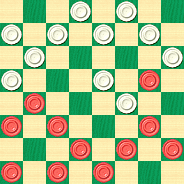
BLACK
Black to Play and Win
B:W31,30,28,27,26,25,24,21,20,18,14:B17,16,12,11,9,7,6,5,4,3,2.
Forces are even, but frankly, we don't really like the looks of the Black piece on 17. Can you come up with the move that turns the tables and wins the game?
Give it a spin, and if it all comes out backwards, turn around and click on Read More for the solution.![]()
Look Before You Leap

"Look Before You Leap" is good advice not just for the checker player but for life in general. Willie Ryan used that well-known phrase to title one of the positions in his famous Tricks, Traps, & Shots of the Checkerboard, more of which appears today as we continue our electronic republication of this unmatched classic.
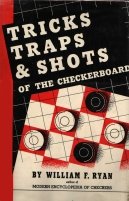
They'll Do It Every Time!
Here is a quick play on the ancient single corner opening that has been dropping the duffers since the days of Anderson and Wyllie. I've scored with this one on countless occasions in my exhibitions.
11-15 22-18 15-22 25-18 8-11 24-19 10-15 19-10 6-22 26-17 9-13 17-14 11-15 28-24 4-8---A.
A---Caught! Either 1-6 or 15-18 will draw.
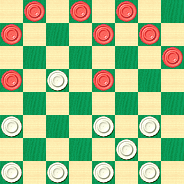
WHITE
White to Play and Win
W:W14,21,23,24,27,29,30,31,32:B1,2,3,5,7,8,12,13,15.
Look Before You Leap
One of the first lessons a beginner learns by sad experience is that moves that appear worthy are often the stepping stones to sudden defeat. The accompanying game illustrates the ever present danger of making plausible-looking moves without first considering the consequences of all possible replies. The following sequence of moves creates the pattern in the diagram:
11-15 23-19 8-11 22-17 4-8 17-13 15-18 24-20 9-14 28-24 10-15 19-10 6-15 26-23 12-16---A.
A---A natural advance that turns into a rout. The correct moves are: 15-19, 24-15, 5-9, 13-6, 1-26, 31-15, 11-18, 25-22, etc., resulting in a draw.
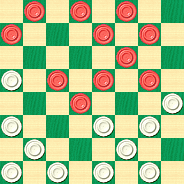
WHITE
White to Play and Win
W:W13,20,21,23,24,25,27,29,30,31,32:B1,2,3,5,7,8,11,14,15,16,18.
Editor's Note: We encourage you to take a good look at these positions before you leap to the solution by clicking on Read More.![]()
Oh My Goodness

We think we've chosen an appropriate title for this month's stroke problem, which at first glance looks as scary as that big snake in the photo above.
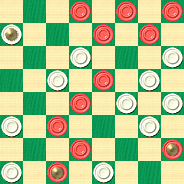
WHITE
White to Play and Win
W:WK5,10,12,14,16,19,20,21,24,29,31:B2,3,4,7,8,15,18,22,26,K28,K30.
Will you be squeezed by the complexity of the problem, or will you slither away successfully? Either way, click on Read More to uncoil the solution.![]()
What Is A Gem?

The definition of a 'gem' problem in checkers is not always clear. We like to think of this in a manner that extends the metaphor: a problem or situation that sparkles and is brilliant in its solution.
Today's installment of our Checker School series presents Dunne's Gem as published in Ben Boland's Famous Positions in the Game of Checkers. Here's the situation:
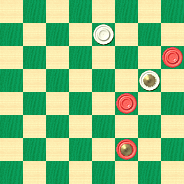
BLACK
Black to Play and Win
B:W26,K17:B21,14,K6.
Now, Black is a man up. What's so special, so gem-like, about this position (if, indeed, anything)?
Work out the solution and then you decide. Is this a true gem or just an ordinary lump of coal? As you might expect there is more here than meets the eye at first glance.
When you're ready, click on Read More for the solution, a sample game, and some notes, quotes, and votes.![]()
Instant Gratification
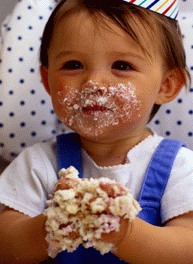
This month we're giving you not one or two but four speed problems. No, we're not being extra-generous; these problems are of a very easy nature and shouldn't take but an instant to solve.
And, knowing us, you know that therein lies the catch. We're giving you all of ten seconds to solve each problem. How good is your pattern recognition? Can you achieve instant gratification by immediately seeing the solutions, or will you be caught by our unforgiving time clock?
Click on Read More to check your solutions, but we doubt you'll need much help here.
Problem One (extremely easy)
Problem Two (extremely easy)
Problem Three (very easy)
Problem Four (very easy)![]()
Inexhaustible

In this age of computerized checkers, with the strongest programs now likely exceeding the capability of even the top human champions; and with the announced intention of the Chinook project to 'solve' the game completely, we often hear that checkers is exhausted, worn out, and no longer of interest.
Well, in this article we're about to disprove that notion--- as if it needed disproving.
Let's look at a position from Richard Pask's excellent book, Key Themes, which, by the way, we'll be offering here in a free, newly typeset electronic edition sometime in this spring (2006). The theme is "The Sunken Piece on Square 5" and we arrive at the diagram below from 11-15 23-19 9-14 22-17 5-9 17-13 14-18! 19-16 12-19 26-23 19-26 30-5.
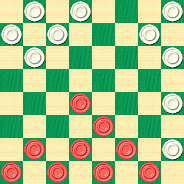
BLACK
Black to Play and Draw
B:W32,31,29,28,27,25,24,21,13,5:B15,10,8,7,6,4,3,2,1.
Let us first assure you that the position is indeed a draw. Black may be a man down but the White piece on square 5 is very much out of the action. Mr. Pask, in his book, gives a continuation from published play, resulting in a draw. But deep computer analysis shows that there are other possibilites, and the Black draw be obtained in at least a couple of different and very interesting ways.
We invite you to do your own analysis, and see how you think Black might draw. Then click on Read More for a few different takes on the position. We think you'll be completely convinced that, as far as the human mind is concerned, checkers is anything but old and tired, and is a truly limitless art.![]()
Brian's Bear Claw Still Unsolved

Brian Hinkle's challenging Bearclaw problem remains unsolved, and less than a month is left until we publish the solution. It's a tough nut to crack, but it's also a chance for the real two-fisted checker player to pull off a coup.
So don't pass up this last chance. Click here to see the problem again, and email your solution to Brian as quick as you can!![]()
The Checker Maven is produced at editorial offices in Honolulu, Hawai`i, as a completely non-commercial public service from which no income is obtained or sought. Original material is Copyright © 2004-2026 Avi Gobbler Publishing. Other material is public domain, AI generated, as attributed, or licensed under CC1, CC2, CC3 or CC4. Information presented on this site is offered as-is, at no cost, and bears no express or implied warranty as to accuracy or usability. You agree that you use such information entirely at your own risk. No liabilities of any kind under any legal theory whatsoever are accepted. The Checker Maven is dedicated to the memory of Mr. Bob Newell, Sr.

